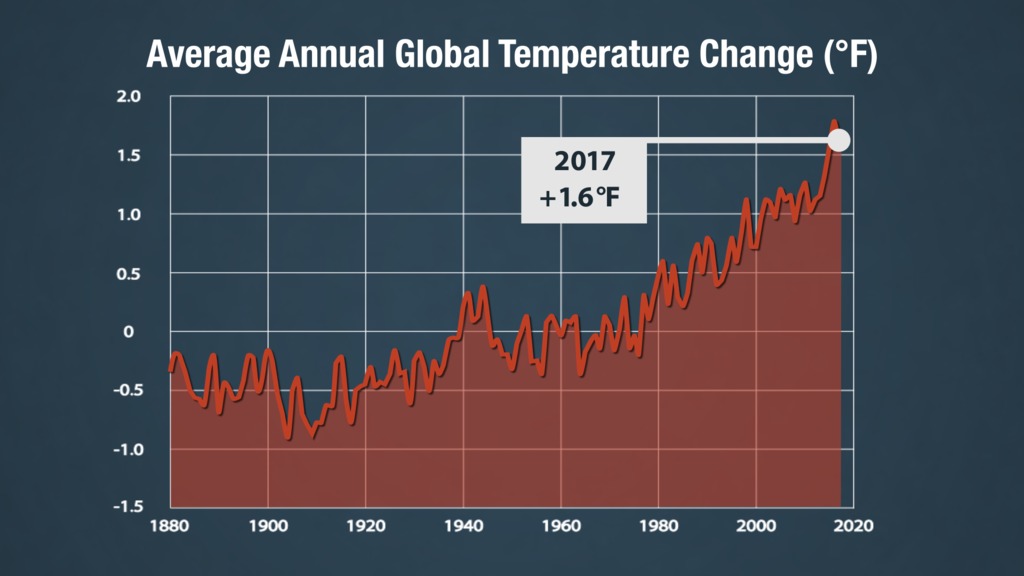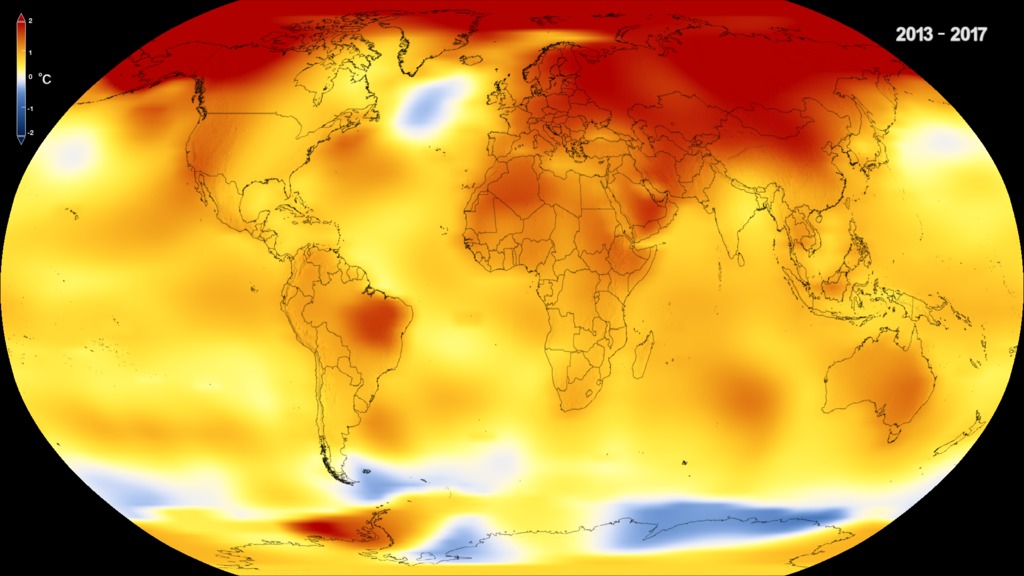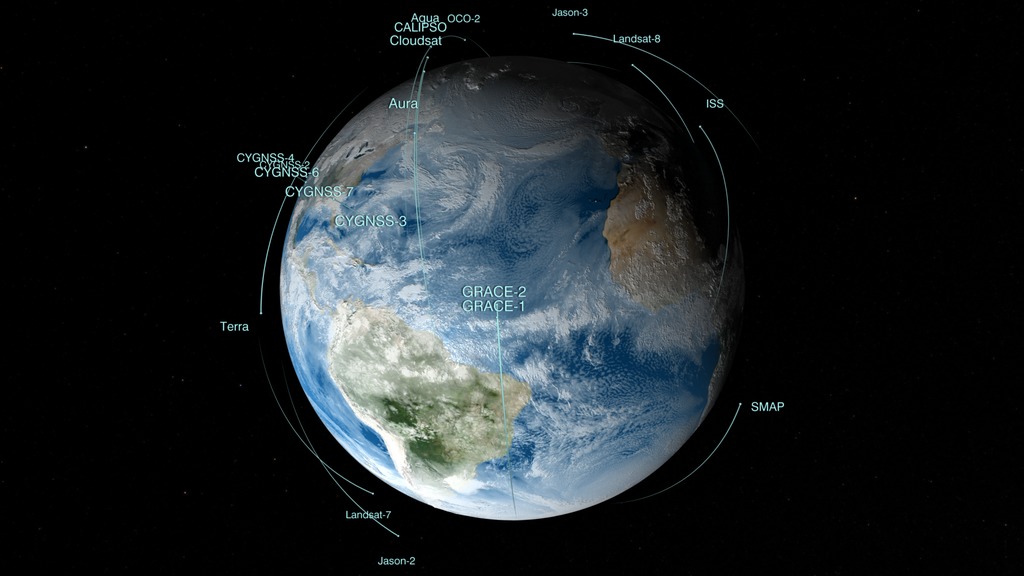The Numbers Are In: Where Does 2017 Rank for Global Temperatures? Live Shots 1.18.18
2017 Takes Second Place For Warmest Year On Record.
NASA Scientists Available January 19th To Share Latest With Your Viewers
In many parts of the United States, 2017 was a year of extremes: deadly hurricanes, devastating flooding and wildfires but also record-breaking Arctic temperatures across much of the country and surprising snowfall in areas of the country that don’t usually see much of the white, fluffy stuff. New York City experienced its coldest New Year’s Eve in 55 years, and Los Angeles hosted the hottest World Series game ever. But where does 2017 rank globally in the temperature record books?
Join NASA scientists from 6:00 a.m. – 11:30 a.m. EST on Friday, Jan. 19 to find out where 2017 global temperatures rank, and find out how NASA uses its unique vantage point from space to track how the Earth is responding to a warming climate.
Despite year-to-year changes, average temperatures around the globe remain on a steady, long-term upward trend. In fact, 17 of the 18 warmest years on record have occurred since 2001. NASA scientists will break down where 2017 stands in the record books, and what role warmer temperatures may have played in the extreme events that the U.S. experienced last year.
HD Satellite Coordinates for G17-K18/Upper: Galaxy 17 Ku-band Xp 18 Slot Upper| 91.0 ° W Longitude | DL 12069.0 MHz | Vertical Polarity | QPSK/DVB-S | FEC 3/4 | SR 13.235 Mbps | DR 18.2954 MHz | HD 720p | Format MPEG2 | Chroma Level 4:2:0 | Audio Embedded
*****To book a window contact****
Michelle Handleman / Michelle.z.handleman@nasa.gov / 301-286-0918
Suggested Questions:
1. NASA just released data about 2017. Tell us where 2017 ranks among the warmest years on record?
2. December was unusually cold for much of the U.S. How does that compare to what we saw elsewhere around the world last month?
3. Last year was a wild year for weather in the United States/our area. How does what we saw overall in the U.S. in 2017 relate to the broader global picture?
4. What are some of the other effects we’re seeing as temperatures rise?
5. Where can we learn more?
Questions For Longer Interviews:
1. What is an El Niño and what part has this weather pattern played in global temperatures in recent years?
2. How might shifting patterns of El Niño to a possible La Nina impact us this year?
3. What is driving our planet’s long term warming trend?
4. One or two degree temperature increases don’t sound like much. Why is this significant?
5. NASA has a global perspective here on Earth and in space. How do NASA’s observations from space help us understand the changing climate?
Live Shot Details:
Location: NASA’s Goddard Space Flight Center/Greenbelt, Maryland
Scientists:
Dr. Doug Morton / NASA Scientist (English and Portuguese)
Dr. Lesley Ott / NASA Scientist
Dr. Eric Brown De Colstoun / NASA Scientist (en Español)
Media Interview with Doug Morton - NASA Scientist. Soundbites are separted by slates. TRT 5:08
1. NASA just released data about 2017. Tell us where 2017 ranks amoung the warmest years on record?
2. December was unusually cold for much of the U.S. How does that compare to what we saw elsewhere around the world last month?
3. Last year was a wild year for weather in the U.S./our area. How does what we saw overall in the U.S. in 2017 relate to the broader global picture?
4. What are some of the other effects we're seeing as temperatures rise?
5. What is an El Nino and what part has this weather pattern played in global temperatures in recent years?
6. One or two degree temperature increases don't sound like much. Why is this significant?
7. NASA has a global perspective here on Earth and in space. How do NASA's observations from space help us understand the changing climate?
8. Where can we learn more?
Media Interview with Doug Morton - NASA Scientist. [Off Camera view] Soundbites are separted by slates. TRT 5:25
1. NASA just released data about 2017. Tell us where 2017 ranks amoung the warmest years on record?
2. December was unusually cold for much of the U.S. How does that compare to what we saw elsewhere around the world last month?
3. Last year was a wild year for weather in the U.S./our area. How does what we saw overall in the U.S. in 2017 relate to the broader global picture?
4. What are some of the other effects we're seeing as temperatures rise?
5. What is an El Nino and what part has this weather pattern played in global temperatures in recent years?
6. One or two degree temperature increases don't sound like much. Why is this significant?
7. NASA has a global perspective here on Earth and in space. How do NASA's observations from space help us understand the changing climate?
8. Where can we learn more?
Credits
Please give credit for this item to:
NASA's Goddard Space Flight Center
-
Producers
- Michelle Handleman (USRA)
- Matthew R. Radcliff (USRA)
-
Editor
- Michael Randazzo (Advocates in Manpower Management, Inc.)
-
Director
- Pat Kennedy (KBR Wyle Services, LLC)
-
Technical director
- John Caldwell (Advocates in Manpower Management, Inc.)
-
Graphics
- Michael Randazzo (Advocates in Manpower Management, Inc.)
-
Videographer
- Stuart A. Snodgrass (KBR Wyle Services, LLC)
-
Audio technician
- Rob Andreoli (Advocates in Manpower Management, Inc.)
-
Support
- Rich Melnick (KBR Wyle Services, LLC)
Release date
This page was originally published on Tuesday, January 16, 2018.
This page was last updated on Wednesday, May 3, 2023 at 1:47 PM EDT.


![Complete transcript available.Music: Sojourner Rover by Craig Warnock [PRS], Lee Ahmad Baker [PRS], Sean Hennessey [PRS]](/vis/a010000/a012800/a012822/LARGE_MP4_12822_2017Temp_large.00001_print.jpg)
![NASA's fleet of Earth science satellites, along with Earth science instruments on the International Space Station, surveys the whole globe, even the most remote parts that are difficult if not impossible to visit. With instruments in space, scientists can get data for the whole globe in detail that they can't get anywhere else. This visualization shows the NASA fleet in 2017, from low Earth orbit all the way out to the DSCOVR satellite taking in the million-mile view.Music: The Glide, by Zubin Thakkar [SOCAN]Watch this video on the NASA Goddard YouTube channel.](/vis/a010000/a012500/a012586/12586_Earth_Fleet_2017_large.00330_print.jpg)
